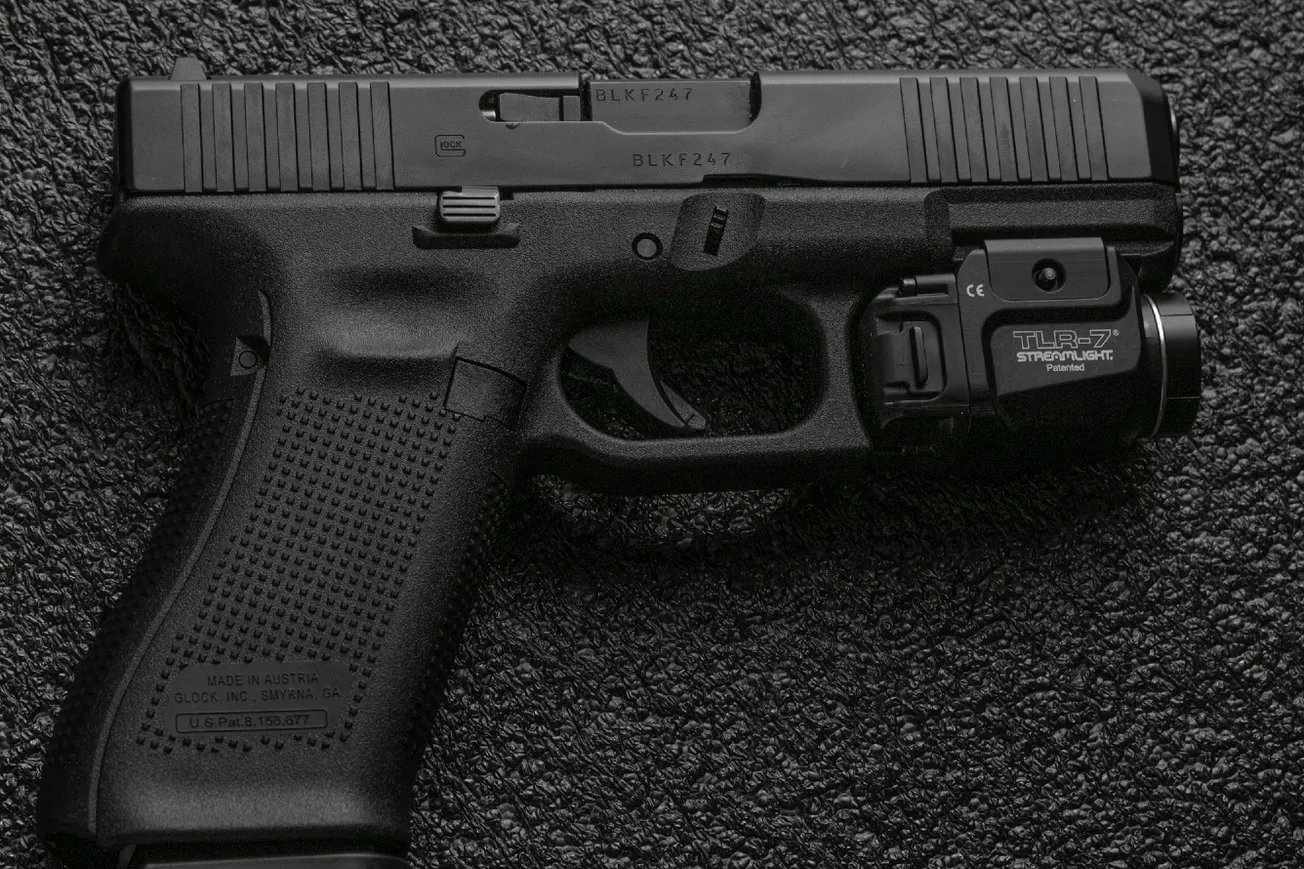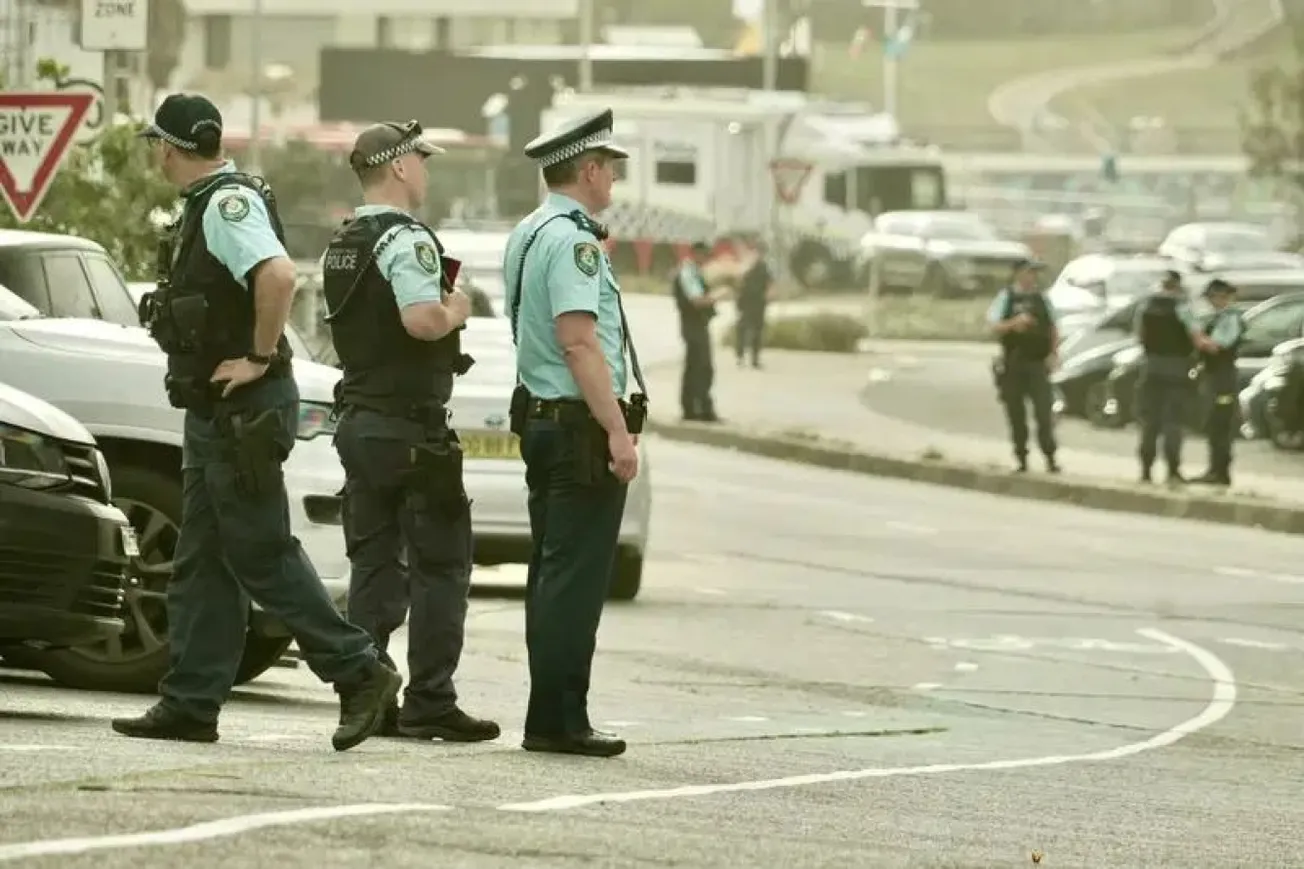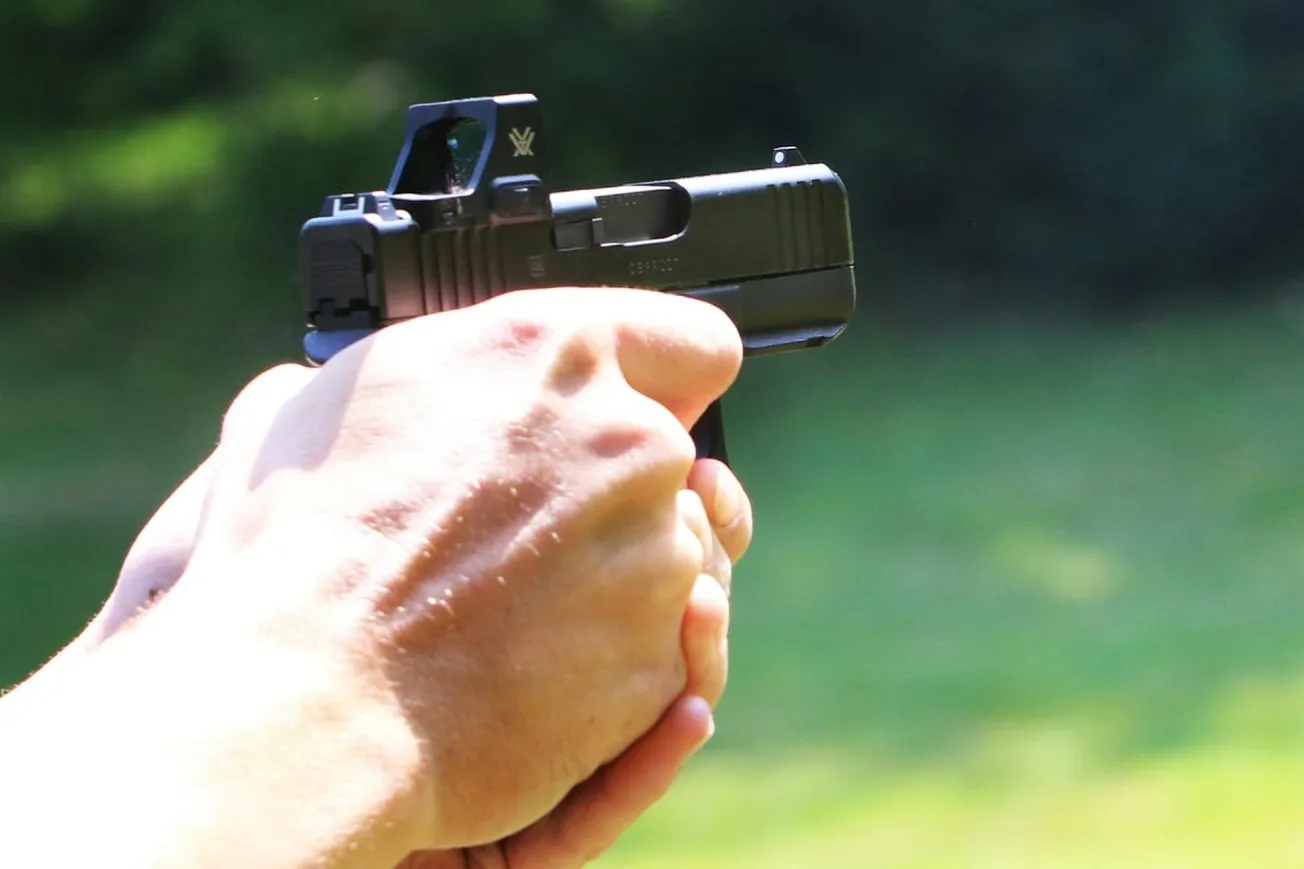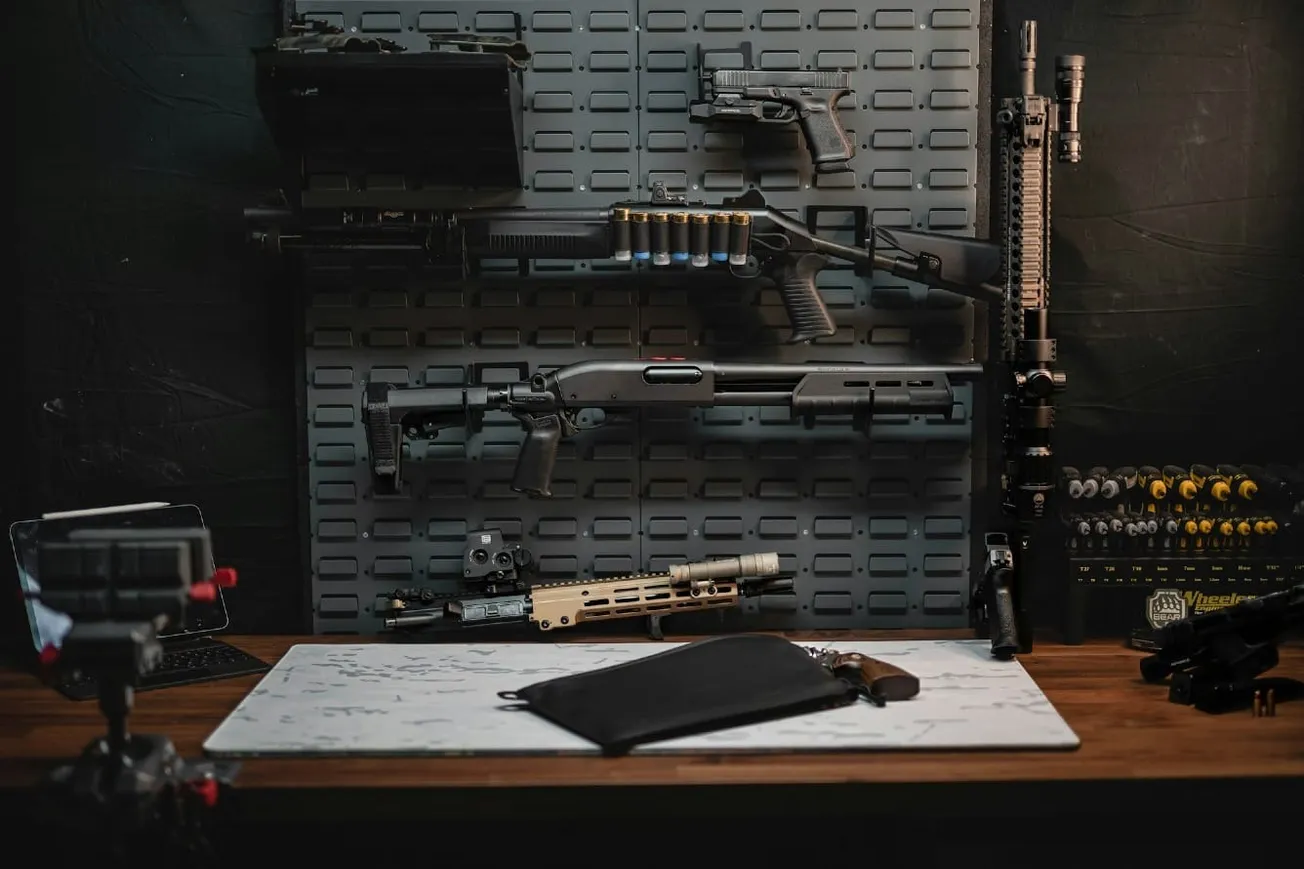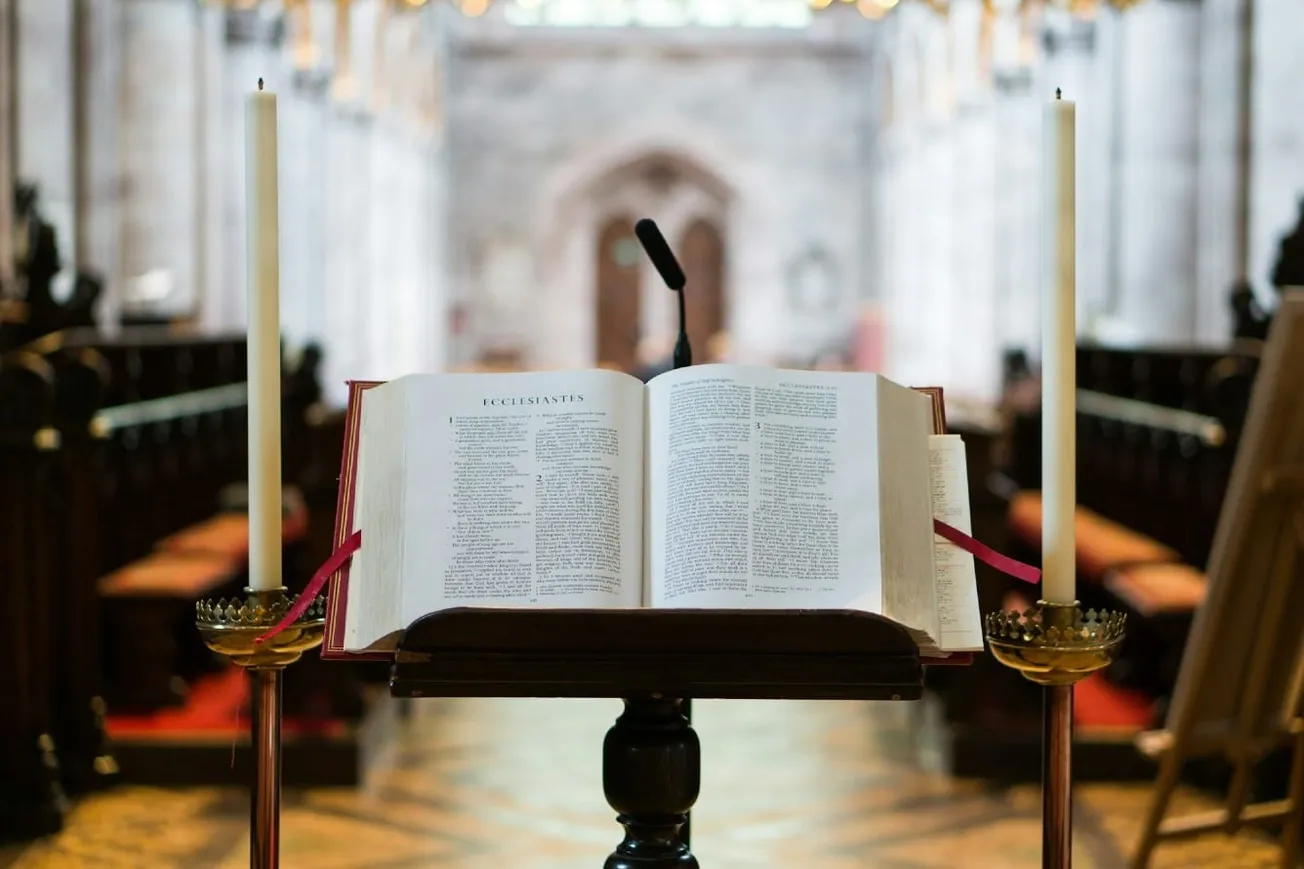By Amy Swearer & Grace McNabnay via The Daily Signal | February 18, 2025
As wildfires raged last month in California, tens of thousands of people were forced to flee their homes, often with just minutes of warning. To make matters worse, looters took advantage of the chaos and lack of police resources, showing up in droves to ransack evacuated areas—sometimes as helpless residents looked on in horror as their doorbell cameras captured the looting in real time.
Fortunately for residents of at least some evacuated areas, a handful of their armed neighbors stayed behind to protect their homes and livelihoods from would-be looters—in some cases, bravely patrolling their streets with firearms in what certainly seemed to be open defiance of the state’s public carry laws.
But for countless others, the state’s restrictive gun laws undoubtedly complicated their ability to defend their homes, at the very least compounding their anxiety by raising questions about their legal rights in a state notorious for treating lawful gun owners as the enemy of public safety. Barriers like mandatory waiting periods, meanwhile, ensured that Californians who didn’t already own guns would be kept from exercising one of their most fundamental rights precisely when it mattered most.
Indeed, the right to keep and bear arms is centered on the underlying natural right of self-defense. And Americans are very effective at exercising that vital right—at least when the government gets out of the way.
Almost every major study has found that Americans use their firearms in self-defense between 500,000 and 3 million times annually, according to the most recent report on the subject by the Centers for Disease Control and Prevention. In 2021, the most comprehensive study ever conducted on the issue concluded that roughly 1.6 million defensive gun uses occur in the United States every year.
For this reason, The Daily Signal publishes a monthly article highlighting some of the previous month’s many news stories on defensive gun use that you may have missed—or that might not have made it to the national spotlight in the first place. (Read accounts from past months and years here.)
The examples below represent only a small portion of the news stories on defensive gun use that we found in January. You may explore more by using The Heritage Foundation’s interactive Defensive Gun Use Database.
- Jan. 4, North Charleston, South Carolina: When a man saw his neighbor dragging a woman by her hair through the front yard of a nearby home, he called 911, then grabbed his handgun before successfully intervening to protect the woman without having to fire a shot. Police arrived and arrested the neighbor, who was “visibly intoxicated” and smelled of alcohol. He was charged with first-degree domestic violence.
- Jan. 6, Grovetown, Georgia: Police say that a woman—who was nine months pregnant—shot and wounded her ex-boyfriend after he smashed a living room window in an attempt to force his way inside the home. The ex-boyfriend (who was also the father of the woman’s 2-year-old son and unborn child) had previous domestic violence convictions. Police quickly arrested him on unrelated warrants for violating his probation, and he now faces an additional charge for domestic violence-related criminal trespass.
- Jan. 9, Clarion, Pennsylvania: After a woman and her husband discovered a serial stalker had come to their home and parked in their driveway, one of the woman’s employees responded to their call for help and detained the stalker at gunpoint until police arrived. Police arrested the stalker, who they described as engaging in “an escalating pattern of concerning behavior” over the last two years. He’d been released on bail just 17 days earlier after a different stalking incident involving the same victims.
- Jan. 11, Brooklyn, New York: A concealed carry permit holder fatally shot a man who tried to rob him at knifepoint in a park. The robber allegedly put the victim in a chokehold and held a knife to his neck while demanding all of his money, but the permit holder drew his gun and shot his assailant. Police said the permit holder is unlikely to face criminal charges.
- Jan. 12, Omaha, Nebraska: After a man was removed from a nightclub, he returned with a firearm, made threats, and began shooting. He injured several people before an armed bystander intervened, returning fire and fatally striking the gunman. The local county attorney told reporters that the armed bystander “was definitely justified in using his firearm [in] self-defense” and that the shooter was legally prohibited from owning firearms due to his criminal record.
- Jan. 15, San Antonio, Texas: When an apartment complex manager and two maintenance workers confronted a suspicious man who’d been peering into residents’ vehicles, the man “became hostile” and physically assaulted them. A resident then tried to intervene, but the man pulled out a knife and a taser. The resident responded by drawing a handgun, causing the man to flee. The resident chased him in a “brief pursuit” before the man turned around and “postur[ed] like he was about to stab or attack the resident,” at which point the resident shot and wounded him.
- Jan. 17, West Palm Beach, Florida: Police say that an armed supervisor at a welding company successfully intervened to end an active shooter situation that could have been much worse. The supervisor fatally shot an employee who’d opened fire on his co-workers and was reloading his firearm while standing over an injured victim. The gunman managed to kill one victim, but the wounded victim is expected to survive. The gunman—who was facing termination over poor work attendance—was prohibited from possessing firearms after a risk-protection order was issued against him under the state’s “red flag law.”
- Jan. 24, Boulder City, Nevada: An off-duty police officer intervened after hearing his neighbor “violently attacking a woman” in his backyard. He managed to separate the victim from her assailant while his wife called 911, but the man followed the officer to his front yard, choked him, and “slammed his head into a car.” The officer freed himself, and then he and his wife each drew their guns while the officer ordered the man to get on the ground. The man, however, “advanced toward the [couple],” prompting both the officer and his wife to open fire, killing him. The original victim was treated for lacerations, bruises, and strangulation injuries incurred during the assault. She told police that she believed the man would have tried to kill her if no one had intervened.
- Jan. 26, Kansas City, Missouri: A knife-wielding man entered a convenience store, jumped over the counter, and tried to stab the manager. The manager, however, drew a gun and shot the attacker, wounding him. A bystander in the store was also armed and “stood guard” over several customers (including an 8-year-old) who barricaded themselves in a back room during the assault. The injured suspect was charged with first-degree assault and armed criminal action. The 8-year-old’s father, meanwhile, told reporters that he believed the armed intervention saved their lives.
- Jan. 29, Albuquerque, New Mexico: Police say that several teens tried to rob a man and his wife at gunpoint as they sat in their car in an apartment complex parking lot. When one of the teens shot the woman, her husband returned fire, killing one suspect and sending the others fleeing. Police eventually arrested seven suspects in connection with the botched robbery—all of them between the ages of 12 and 17, and some of whom already had significant criminal histories. The injured woman is expected to recover.
- Jan. 31, Chicago: Two armed men approached a garbage truck driver and tried to rob him. Fortunately, the driver had a valid concealed carry permit and exchanged gunfire with his two assailants, fatally striking one and critically injuring the other. The driver wasn’t injured during the shootout but was evaluated for chest pain at a hospital, where he was listed in good condition.
As these stories demonstrate, the right to keep and bear arms is often most critically important at the times when we least expect to need it. Few people wake up in the morning anticipating that their day will involve a life-threatening encounter during which the government won’t be there to protect them.
But criminal violence rarely comes with advanced warnings. We never know when civil society’s protections will fail, either for us as individuals or for our broader communities. And for all of the moments in which the government can’t or won’t be there to protect us, the Second Amendment ensures that we can protect ourselves (unless, of course, the government regulates that assurance away in the name of “common sense” gun restrictions).
Amy Swearer is a senior legal fellow in The Heritage Foundation’s Edwin Meese III Center for Legal and Judicial Studies.
Grace McNabnay is a member of the Young Leaders Program at The Heritage Foundation.
Original article link

